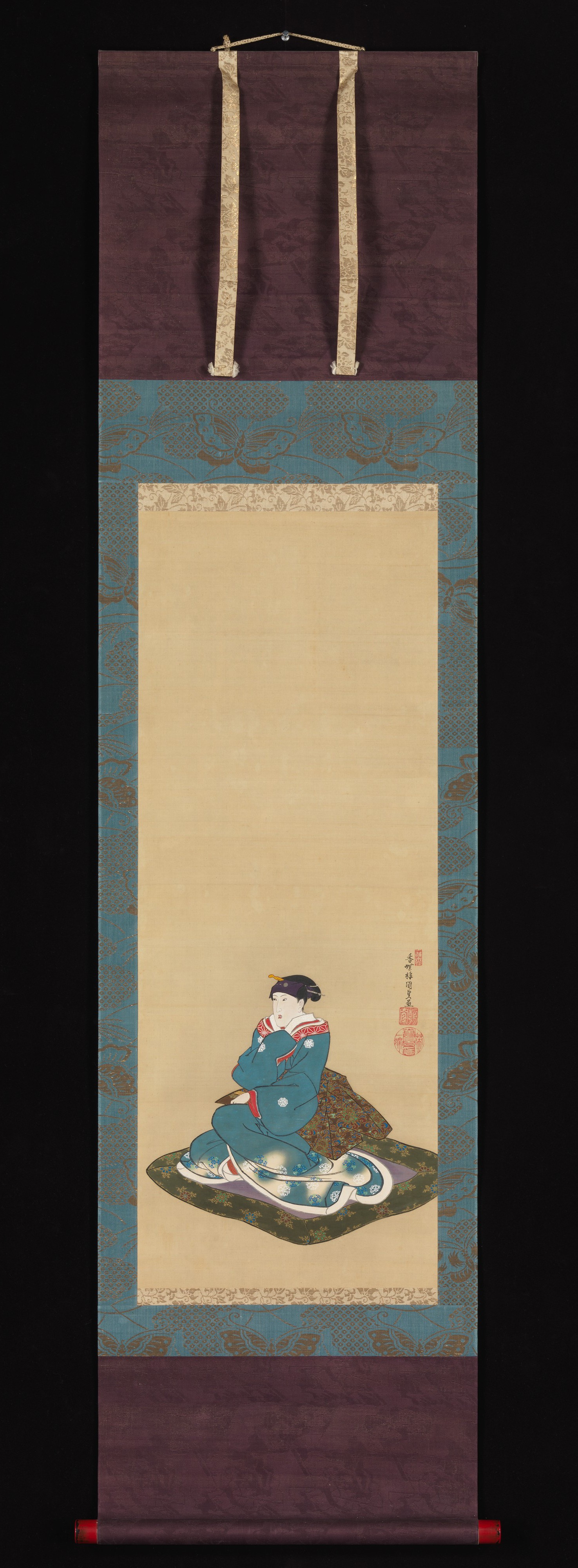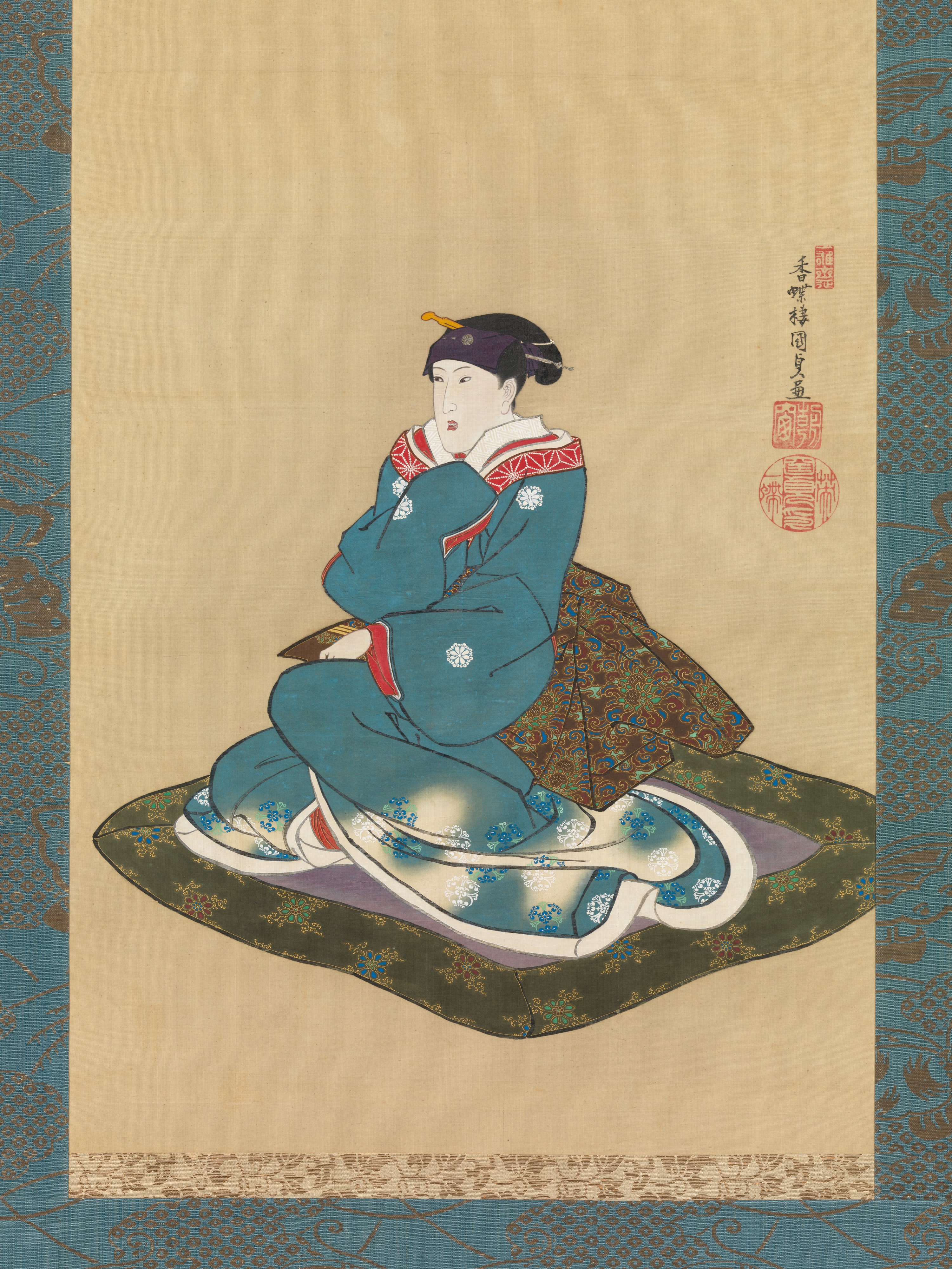Portrait of Iwai Kumesaburō II
Utagawa Kunisada Japanese
Not on view
This portrait captures the appearance of Iwai Kumesaburō II (Hanshirō VI, 1799–1836), the famous player of female roles in Kabuki theater, as a young man in his late twenties. The actor is portrayed in formal clothing, not in costume. Covering his shaven pate is a purple square of silk, a symbol of status worn by players of female roles since the seventeenth century. One of Iwai's specialties was performing multiple roles at the same time, and it was during one of these performances, playing fifteen roles at once, that he became ill and died in 1836.
Though the formal pose of the sitter calls to mind conventions used for memorial portraits, the handwriting style of the signature is one used by the artist in the late 1820s, about a decade before the actor died. Clearly the artist had left space for an inscription, perhaps one by the actor himself, but it was was never filled in.
Utagawa Kunisada was one of the most prolific ukiyo-e print artists of the nineteenth century, but was also known for taking on deluxe painting commissions.
This image cannot be enlarged, viewed at full screen, or downloaded.
This artwork is meant to be viewed from right to left. Scroll left to view more.




